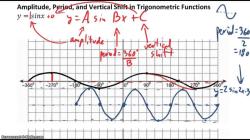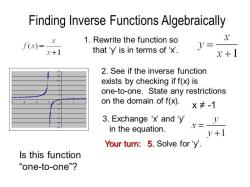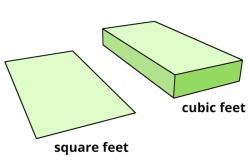How do you solve trigonometry problems?
Solving trigonometry problems involves applying trigonometric principles to find missing angles, side lengths, or other information in a given scenario. Here's a general approach to solving trigonometry problems:
Understand the Problem:
- Carefully read and understand the problem statement. Identify what is given and what you need to find.
- Determine the type of trigonometric relationship (sine, cosine, tangent) you should use based on the problem's context.
Draw a Diagram:
- Create a visual representation of the problem using a diagram or sketch. This helps you visualize the situation and the relationships between angles and sides.
Label the Diagram:
- Label the known values and unknown values on your diagram. Use variables to represent unknown quantities.
Choose the Appropriate Trigonometric Function:
- Based on the information given, select the appropriate trigonometric function (sine, cosine, or tangent) that relates the known and unknown values.
- Remember the basic trigonometric ratios:
- Sine (sin): Opposite / Hypotenuse
- Cosine (cos): Adjacent / Hypotenuse
- Tangent (tan): Opposite / Adjacent
Write Down the Trigonometric Equation:
- Formulate an equation using the trigonometric function you selected. This equation relates the known values to the unknown values.
Solve the Equation:
- Solve the equation for the unknown variable. This may involve algebraic manipulation, simplifying trigonometric expressions, and applying inverse trigonometric functions (e.g., arccos, arcsin, arctan) to find the angle values.
Check Units and Conversions:
- Ensure that your units are consistent. If you're working with angles in degrees, make sure all angles are in degrees. If you're working with radians, use radians throughout.
Check for Extraneous Solutions:
- Trigonometric equations may have multiple solutions, but not all of them are valid in a given context. Check if any solutions are extraneous (i.e., they don't make sense in the context of the problem).
State the Solution:
- Present your solution in a clear and concise manner, including the value of the unknown variable and any relevant units.
Check Your Work:
- Revisit the problem and make sure your solution is consistent with the original problem statement. Check that your answer makes sense in the given context.
Practice and Review:
- Trigonometry problem-solving skills improve with practice. Work through a variety of problems to become more comfortable with the concepts and techniques.
Remember that trigonometry problems can vary widely in complexity, from basic right triangle problems to more advanced applications in physics, engineering, and other fields. As you gain experience, you'll become more adept at choosing the right trigonometric relationships and solving a wide range of trigonometry problems.
Mastering Trigonometry: Tips for Solving Trigonometric Problems
Here are some tips for mastering trigonometry and solving trigonometric problems:
- Understand the basics. Make sure you have a solid understanding of the fundamental concepts of trigonometry, such as sine, cosine, tangent, and the Pythagorean Theorem.
- Practice regularly. The more you practice, the better you will become at solving trigonometric problems.
- Use mnemonic devices. Mnemonic devices are memory aids that can help you remember trigonometric formulas and identities.
- Draw diagrams. Diagrams can help you visualize and understand trigonometric problems.
- Use technology. There are a number of software programs and online calculators that can help you solve trigonometric problems.
Key Trigonometric Identities and Formulas for Problem Solving
Here are some key trigonometric identities and formulas that are useful for solving problems:
- Pythagorean Theorem: a^2 + b^2 = c^2
- Sine function: sin(x) = opposite over hypotenuse
- Cosine function: cos(x) = adjacent over hypotenuse
- Tangent function: tan(x) = opposite over adjacent
- Law of Sines: a/sin(A) = b/sin(B) = c/sin(C)
- Law of Cosines: c^2 = a^2 + b^2 - 2ab cos(C)
- Sum-to-product identity: sin(A + B) = sin(A)cos(B) + cos(A)sin(B)
- Product-to-sum identity: sin(2A) = 2sin(A)cos(A)
Real-World Applications of Trigonometry in Problem Solving
Trigonometry has a wide range of real-world applications. Here are a few examples:
- Surveying: Surveyors use trigonometry to measure distances and angles between points on a map.
- Construction: Construction workers use trigonometry to lay out foundations, design structures, and calculate the heights of buildings.
- Navigation: Navigators use trigonometry to determine their location and to plan their course.
- Astronomy: Astronomers use trigonometry to study the motions of planets and stars.
- Physics: Physicists use trigonometry to solve problems involving forces, motion, and energy.
Strategies for Navigating Trigonometric Challenges and Concepts
If you are struggling with a particular trigonometric concept or problem, here are a few strategies that can help:
- Break the problem down into smaller steps. This can make it easier to understand and solve the problem.
- Look for patterns. Often, there are patterns in trigonometric problems that can help you solve them more easily.
- Try different approaches. If you are stuck on a problem, try using a different approach. For example, if you are stuck on an algebraic approach, try using a geometric approach instead.
- Ask for help. If you are still struggling, don't be afraid to ask for help from a teacher, tutor, or classmate.
Exploring Advanced Trigonometry Problems and Solutions
Once you have mastered the basics of trigonometry, you can start exploring more advanced problems and solutions. There are a number of books and online resources that can help you with this.
Here are a few examples of advanced trigonometry problems:
- Solving trigonometric equations: Trigonometric equations are equations that contain trigonometric functions. Solving these equations can be challenging, but there are a number of methods that can be used.
- Finding the maximum and minimum values of trigonometric functions: Trigonometric functions can have maximum and minimum values. Finding these values can be useful for solving a variety of problems.
- Proving trigonometric identities: Trigonometric identities are equations that are always true. Proving these identities can be challenging, but it is a good way to deepen your understanding of trigonometry.
Exploring advanced trigonometry problems and solutions can be a rewarding experience. It can help you develop your problem-solving skills and learn more about the power of trigonometry.












